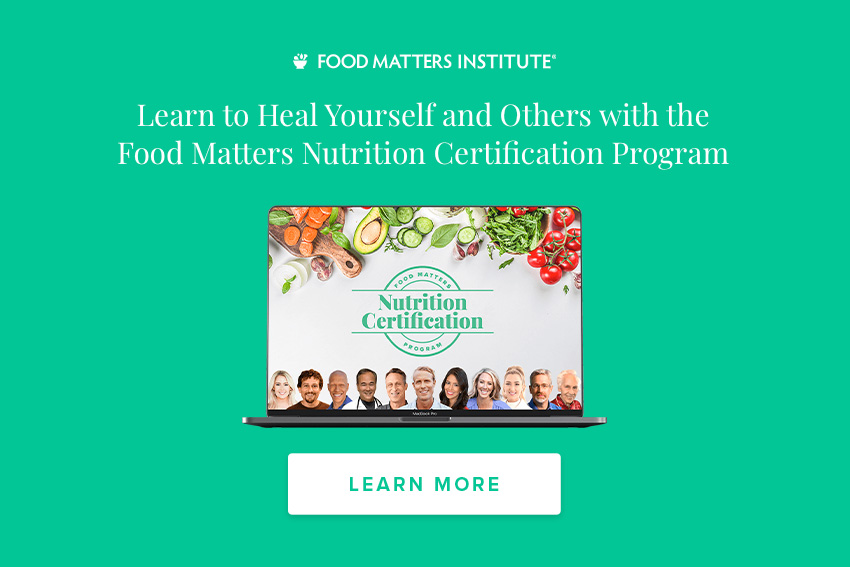22 Additives And Preservatives To Avoid
It seems there is a constant struggle to find foods without additives and preservatives. Many have been around for a very long time, while others surface as new or simply use another name for a common additive or preservative.
There are numerous reasons why food additives and preservatives are used. One reason is that they can help maintain and improve freshness by slowing product spoilage caused by mold, air, bacteria, fungi or yeast while helping reduce the risk of contamination. In some cases, additives and preservatives may help improve or maintain nutritional benefits.
Additionally, they may be used to improve taste, texture and appearance. For example, emulsifiers, stabilizers and thickeners give foods the texture and consistency consumers expect to find when enjoying certain products. Some leavening agents help baked goods rise, another expected attribute, while many additives affect the acidity and alkalinity of certain foods. Commonly, additives and preservatives are used to provide a delicious taste while reducing the fat content.
How do you know what's good and what isn't? One of the best ways to avoid additives and preservatives is by eating organic foods in their original state. Choosing an organic apple over an apple pie is a good example. Regardless, it takes some time to understand which foods are being affected by additives and preservatives, and a commitment to reading labels.
Ultimately, understanding additives and preservatives is important because it can affect your health. Often additives and preservatives are disguised on the labels. Marketing tactics can also play a role in how they represent these potentially harmful ingredients.
Here is a list of the most common additives and preservatives, and what you should know about them.
Artificial Coloring
A key word here is artificial and should give you a good indication that something unnatural is in the product. Typically, artificial colors are chemical-based dyes that are used to color food and drinks. Most processed foods, candies, beverages and many condiments contain artificial coloring.
There is great concern that artificial food coloring may cause increased hyperactivity in children.
1. Yellow No. 5 may cause sever asthma symptoms.
2. Studies have shown that Red Dye No. 2 may cause cancer.
3. Blue #1 and Blue #2 (E133)
Banned in Norway, Finland, and France. May cause chromosomal damage.
Found in candy, cereal, soft drinks, sports drinks and pet foods.
4. Red Dye # 3 (also Red #40 – a more current dye) (E124)
Banned in 1990 after 8 years of debate from use in many foods and cosmetics. This dye continues to be on the market until supplies run out! Has been proven to cause thyroid cancer and chromosomal damage in laboratory animals. May also interfere with brain-nerve transmission.
Found in fruit cocktail, maraschino cherries, cherry pie mix, ice cream, candy, bakery products and more!
5. Yellow #6 (E110) and Yellow Tartrazine (E102)
Banned in Norway and Sweden. Increases the number of kidney and adrenal gland tumors in laboratory animals. May cause chromosomal damage.
Found in American cheese, macaroni and cheese, candy, carbonated beverages, lemonade and more!
6. Natural Green Colour
Has several ingredients including curcumin extracted via petroleum products and propylene glycol found in lollies and drinks.
Regardless, the FDA approves many food coloring additives as safe.
Commonly labeled as artificial colorings. Alternative names: Food, Drug and Cosmetic Colors, Synthetic Colors, FD&C Lakes, Food Dyes, Food Coloring, Artificial Colorants.To find out more about alternative names for common artifical ingredients click here and here.
Sweeteners
7. High Fructose Corn Syrup
High fructose corn syrup (HFCS) is made from corn starch and offers a sweet flavor. It is popular because it is cheaper to produce than cane sugar. Starch is a simple sugar, and when broken down the end result is corn syrup, which is 100% glucose. Enzymes are then added to the corn syrup, helping convert the glucose into another simple sugar called fructose.
In addition to sweet products, it is found in many other types of foods. Yogurts, breads, frozen pizzas, cereal bars, cocktail peanuts, and boxed macaroni and cheese are a few examples where HFCS is found.
Because major health risks have exploded in the past few decades with the increasing popularity of easy to grab processed foods, it is thought that HFCS may increase the risk of obesity and type 2 diabetes.
Labeled as high fructose corn syrup. Alternatives: HFCS, isoglucose, maize syrup, glucose-fructose syrup, glucose/fructose
To read more about HFCS click here, here and here.
8. Aspartame
Aspartame is a low-calorie sweetener consisting of two amino acids, namely phenylalanine and aspartic acid. Because it is about 200 times sweeter than sugar, very little is required to get a sweet taste. Aspartame is usually found in diet or sugar-free sodas, diet coke, coke zero, jello (and other gelatins), desserts, sugar-free gum, drink mixes, baking goods, table-top sweeteners, cereal, breath mints, pudding, kool-aid, iced tea, chewable vitamins, toothpaste.
While watching calorie consumption is important, using artificial additives and sweeteners such as aspartame may cause some health risks. Studies have shown that aspartame may elevate blood glucose and increase anxiety.
Labels use the name aspartame. Alternative names: Canderel, Tropicana Slim, NutraSweet, Equal, AminoSweet
To read more about aspartame click here.
9. Caramelized sugar syrup
Replaces E150 caramel which gives bread and cooked chicken a brown look.
Additives
10. Potassium Bromate
Potassium bromate is a common food additive that is used to strengthen bread and cracker dough, helping it rise during baking; however, California and and the international cancer agency lists it as a carcinogen.
Potassium bromate has been labeled as causing tumors, toxic to the kidneys and may even cause DNA damage. Though once baked, it converts to potassium bromide which has been deemed as non-carcinogenic, some residues exist.
It has been banned in the United Kingdom, European Union and Canada in food, but the United States still allows it to be added to flour.
Labels typically reference it as potassium bromate. Alternatives: bromates, calcium bromate, potassium bromate, sodium bromate, bromated flour.
To read more about Potassium Bromate click here and here.
11. Monosodium Glutamate (MSG)
It is no surprise that MSG is on the list. MSG is created by a naturally occurring chemical called glutamate and looks similar to salt or sugar crystals. While glutamate is tasteless, it has the ability to enhance flavors. It is typically found in Chinese food, canned foods, and processed meats. MSG has the GRAS Classification by the Food & Drug Administration which means it is “generally recognized as safe.” But due to the controversy surrounding MSG, the FDA requires that it be listed on the label.
However, some foods such as tomatoes, soybeans, and seaweed naturally contain glutamate, and some researchers suggests that glutamate, also known as umami, is the another essential flavor that our taste buds can detect, in addition to sweet, salty, bitter, and sour.
MSG has gotten a bad rap for years, with numerous claims in late 1960s alleging that food prepared with MSG at Chinese restaurants made people sick; however, many studies report difficulty in finding concrete evidence that there is a problem with MSG. At the same time, some reports have indicated numerous reactions such as headaches, flushing, sweating, facial pressure or tightness, numbness, tingling or burning in the face, neck and other areas, rapid, heart palpitations, chest pain, nausea, and weakness.
Labels typically note it as monosodium glutamate or MSG, but it may be disguised by other ingredients that contain MSG such as hydrolyzed soy protein and autolyzed yeast. Alternative names: sodium glutamate, MSG, Accent , Zest, Ajinomoto, Vetsin
Click here, here and here to read more about MSG.
Preservatives
12. Sodium Benzoate
Sodium benzoate is a common food preservative used in many processed food products and drinks to prevent spoilage.
Sodium benzoate is the sodium salt of benzoic acid. It is used as an antifungal preservative in pharmaceutical preparations and foods.
Sodium benzoate is often added to acidic food products such as sauerkraut, jellies and jams, and hot sauces; however some foods, like cranberries, cinnamon, prunes and apples, naturally contain it. It has been suggested that it may help treat hyperammonemia in terms of medication.
Concerns have been raised regarding it as a possible cause of hyperactivity in some children, though more studies are needed according to The European Food Safety Authority.
Food labels typically reference it as sodium benzoate. Alternative names: benzoic acid, potassium benzoate, benzoate.
Read more about Sodium Benzonate here, here, here and here.
13. Sodium Nitrite
Sodium nitrite is usually found in preserved meat products like sausages, cured meats and canned meats. Concerns of this preservative are that too much may cause pancreatic cancer and other health problems.
A study reports that methemoglobinemia, a blood disorder in which an abnormal amount of methemoglobin is produced, was found in in an adolescent girl and her father after ingesting homemade beef jerky that contained sodium nitrate. Both experienced palpitations, dyspnea, and visible mucosal cyanosis.
Look for sodium nitrate on the food labels. Alternative names: sodium nitrite, nitrate, nitrite.
To read more about Sodium Nitrite click here, here, here and here.
14. Sodium Sulfite (E221)
Preservative used in wine-making and other processed foods. According to the FDA, approximately one in 100 people is sensitive to sulfites in food. The majority of these individuals are asthmatic, suggesting a link between asthma and sulfites. Individuals who are sulfite sensitive may experience headaches, breathing problems, and rashes. In severe cases, sulfites can actually cause death by closing down the airway altogether, leading to cardiac arrest.
Found in wine and dried fruit.
15. Sulfur Dioxide (E220)
Sulfur additives are toxic and in the United States of America, the Food and Drug Administration have prohibited their use on raw fruit and vegetables. Adverse reactions include bronchial problems, particularly in those prone to asthma, hypotension (low blood pressure), flushing, tingling sensations or anaphylactic shock. It also destroys vitamins B1 and E. Not recommended for consumption by children. The International Labour Organization says to avoid E220 if you suffer from conjunctivitis, bronchitis, emphysema, bronchial asthma, or cardiovascular disease.
Found in beer, soft drinks, dried fruit, juices, cordials, wine, vinegar, and potato products.
16. Propyl Paraben
Propyl paraben is commonly used as a preservative in many foods including tortillas, bread products and food dyes; and cross contamination has lead to propyl paraben showing up in beverages, dairy products, meat and vegetables. It is commonly found in many cosmetics, such as creams, lotions, shampoos and bath products.
A federal study showed that 91 percent of Americans tested had propyl paraben in their urine. This is of concern since propyl paraben is an endocrine-disrupting chemical that is “Generally Recognized as Safe.” Studies indicate that subjects had decreased sperm counts and testosterone levels. Additionally, it has been shown to alter the expression of genes, including those in breast cancer cells and to accelerate the growth of breast cancer cells. Harvard School of Public Health shared the results of a recent study linking propyl paraben to impaired fertility in women.
Look for propyl paraben on the food labels to avoid it. Alternative names: 4-Hydroxybenzoesäurepropylester; propyl paraben; propyl p-hydroxybenzoate; propyl parahydroxybenzoate; nipasol; E216
To read more about Propyl Paraben here and here.
17. BHA And BHT (E320)
Butylated hydroxyanisole (BHA) and butylated hydroxytoluene (BHT) are preservatives found in cereals, chewing gum, potato chips, and vegetable oils. This common preservative keeps foods from changing color, changing flavor or becoming rancid. Affects the neurological system of the brain, alters behavior and has a potential to cause cancer. BHA and BHT are oxidants which form cancer-causing reactive compounds in your body.
Found in potato chips, gum, cereal, frozen sausages, enriched rice, lard, shortening, candy, jello.
By-Products Of Processing Fats
18. Trans Fat
You may have heard of trans fat, which has been a popular topic on labels for the past decade or so. Trans fats are created when manufacturers add hydrogen to vegetable oil which usually occurs during the manufacturing process, though very small amounts of trans fats are naturally occurring in animal fat.
The American Heart Association tells us that trans fats are often found in foods such as fried doughnuts, cakes, pie crusts, biscuits, frozen pizza, cookies, crackers, and margarines.
The problem with trans fats is that they are believed to increase the risk of heart disease, stroke, and type 2 diabetes; in fact, scientists are now in agreement that trans fat is harmful to health. It raises your bad (LDL) cholesterol levels and lowers your good (HDL) cholesterol levels.
Labels are required to list the amount of trans fats. But it is important to note that products can be listed as 0 grams of trans fats if they contain less than 0.5 grams per serving. You are likely to see them on a label listed as partially hydrogenated oils. Alternative names: partially hydrogenated cottonseed oil, partially hydrogenated palm oil, partially hydrogenated soybean oil, partially hydrogenated vegetable oil, trans fats, trans fatty acids, partially hydrogenated canola oil.
Read more about trans fats here and here.
Extracts
19. Rosemary Extract
Actual additive numbers 300-321, found in some cereals, salami, fresh pasta or margarine or cooking oils.
20. Yeast Extract
Hidden form of MSG found in some spreads, soups, dips, chips, microwave dinners.
21. Rice Extract
A chemical stabilizer and emulsifier used in ice cream, pizzas, savory snacks.
22. Roasted Barley Malt Extract
Flavoring and color enhancer that makes cereals taste toasted.
What Can You Do
Avoiding food additives and preservatives doesn’t have to be daunting. While it is present in the majority of packaged foods, eating foods in their original, organic state can greatly reduce risks associated with additives and preservatives. Consider some DIY beauty products. Checking the label and looking for products that contain ingredients that you understand is very helpful when making food or personal care product choices.
For a full list of these ingredients, go to here or here.
What Steps Have You Taken To Remove Food Additives And Preservatives From Your Life? Share Your Thoughts In The Comments Below!
Do you have a passion for nutrition & natural healing?. Learn more about the Food Matters Nutrition Certification Program here.


